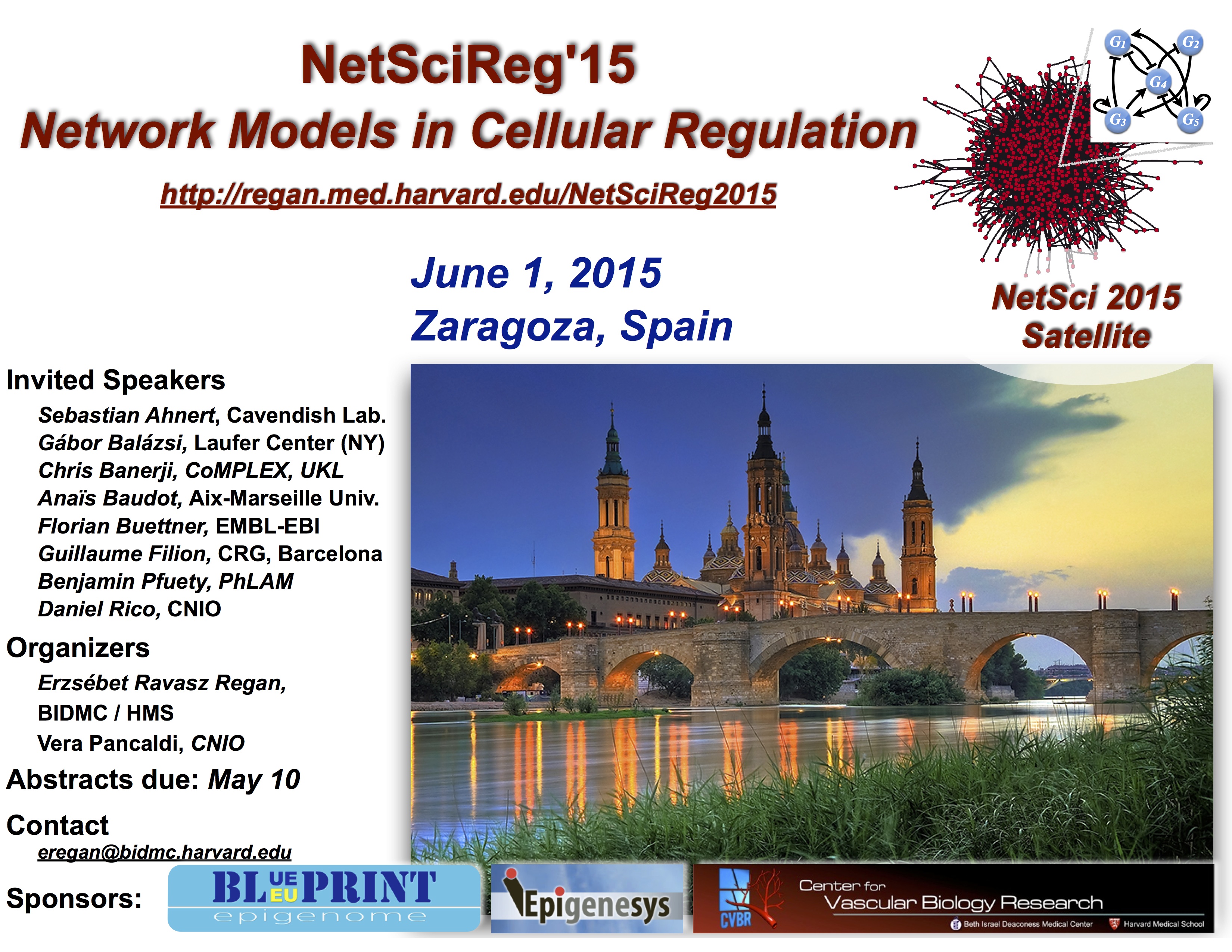NetSciReg'15 - Network Models in Cellular Regulation
June 1, 2015 - Zaragoza, Spain
| Synopsis |
| Program |
| NetSciReg'15 Flyer |
| Important Dates |
| Registration |
| Call for Contributed Talks |
| Logistics |
| NetSci 2015 |
| NetSciReg'14 |
| NetSciReg'13 |
| Sponsors |
|
Time: 11:10 - 11:30 AM
Type: Contributed Talk
Affiliation:
Abstract Phenotypic noise is defined as the cell-to-cell variability in gene expression within an isogenic population. Despite the detrimental consequences on cellular events that require a fine control of information flow, this variability has also been exploited during evolution providing advantages to cells in dynamically changing environments. Beyond the natural context, the control of noise on gene expression represents a pivotal requirement for the design of gene-circuits with well-defined functionalities in synthetic biology. The overall phenotypical noise arises from the inherent stochasticity of biochemical reactions occurring within the cellular compartment (intrinsic noise) and differences in status among individual cells (extrinsic noise), e.g. numbers of RNA-polymerases or ribosomes, local environmental conditions, or concentration of transcription factors. The interplay between the gene network architecture and stochasticity in gene expression has been the subject of intense research in recent years, under the dual perspective of shedding light into how naturally occurring pathways evolved to counteract or amplify noise amplitude and defining design requirements for synthetic gene circuits with reliable functions. In this study, we compared phenotypic noise within an isogenic population of bacterial cells transformed with elementary synthetic circuits implementing either a transcriptional or a post-transcriptional control of gene expression. The circuit design aimed at the implementation of both control mechanisms by similar molecular architectures, in order to evaluate transcriptional and post-transcription control in two comparable systems. Gene synthesis was controlled by a promoter regulated by an exogenous signal in both gene circuits. Experimental measurements and mathematical models provided a consistent description of the differences on protein variability resulting from the two control mechanisms. Specifically, our results highlight that noise is lower for the gene-circuit with post-transcription control, and that the difference in protein variability between the two circuits increases when the post-transcription control on gene-expression is more efficient. These experimental results were correctly reproduced by stochastic simulations based on mathematical models that explicitly described cell-divisions events and did not include transcriptional burst. The data presented in this study support the hypothesis that post-transcriptional control might have been naturally selected for decreasing the noise on protein expression. Finally post-transcriptional control, although metabolically more demanding, proves to be a plausible tool for reducing phenotypic variability in synthetic biology applications. |
SPONSORS: |



